09:00 – 09:30
Aim, Contents, Learning outcomes
Organization
Activity: Brainstorming 6.1 – POW
#1. Welcome participants, introduce the aim, contents and the learning outcomes of this module
Note: Present slides number 1 to 6
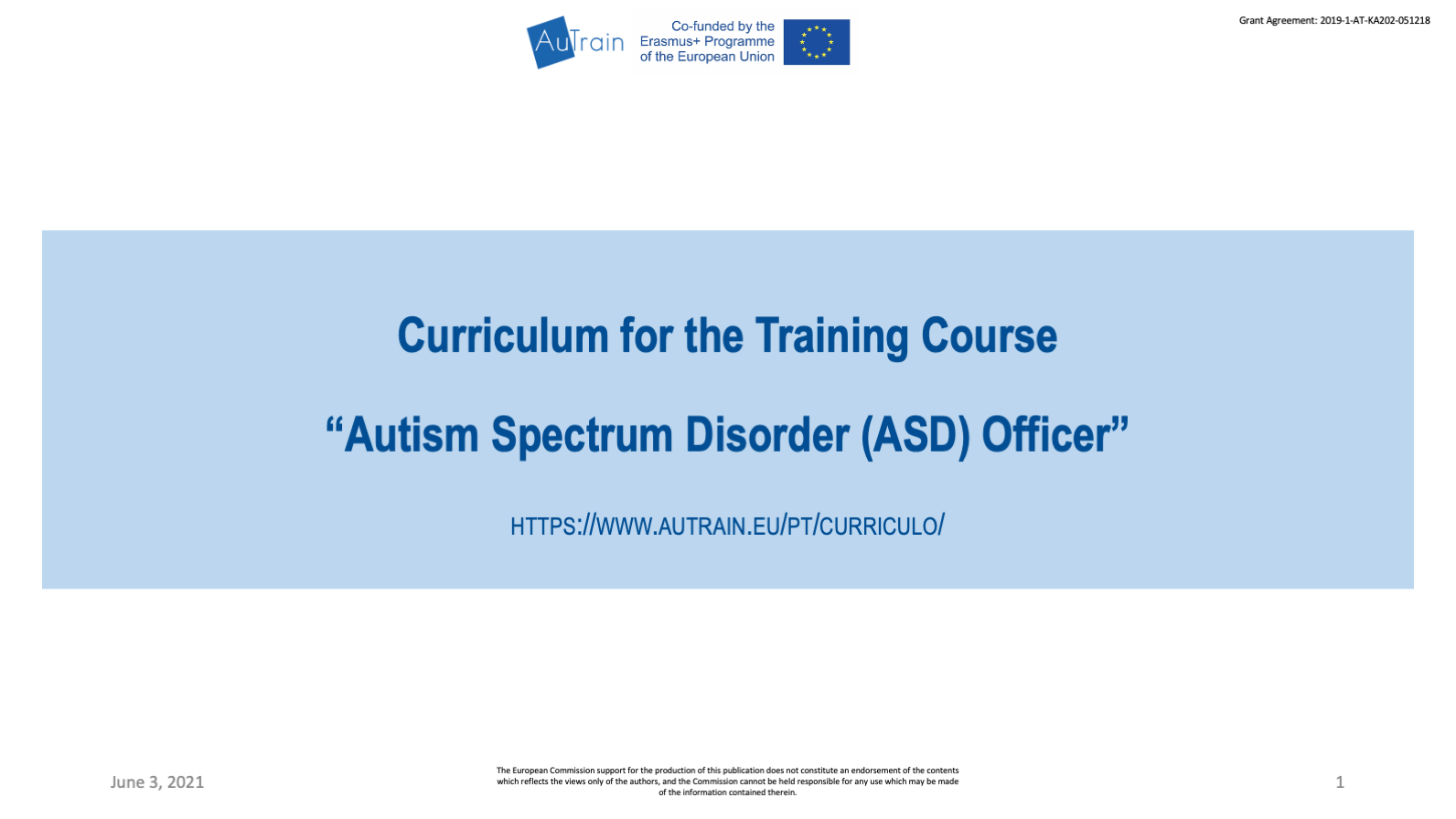
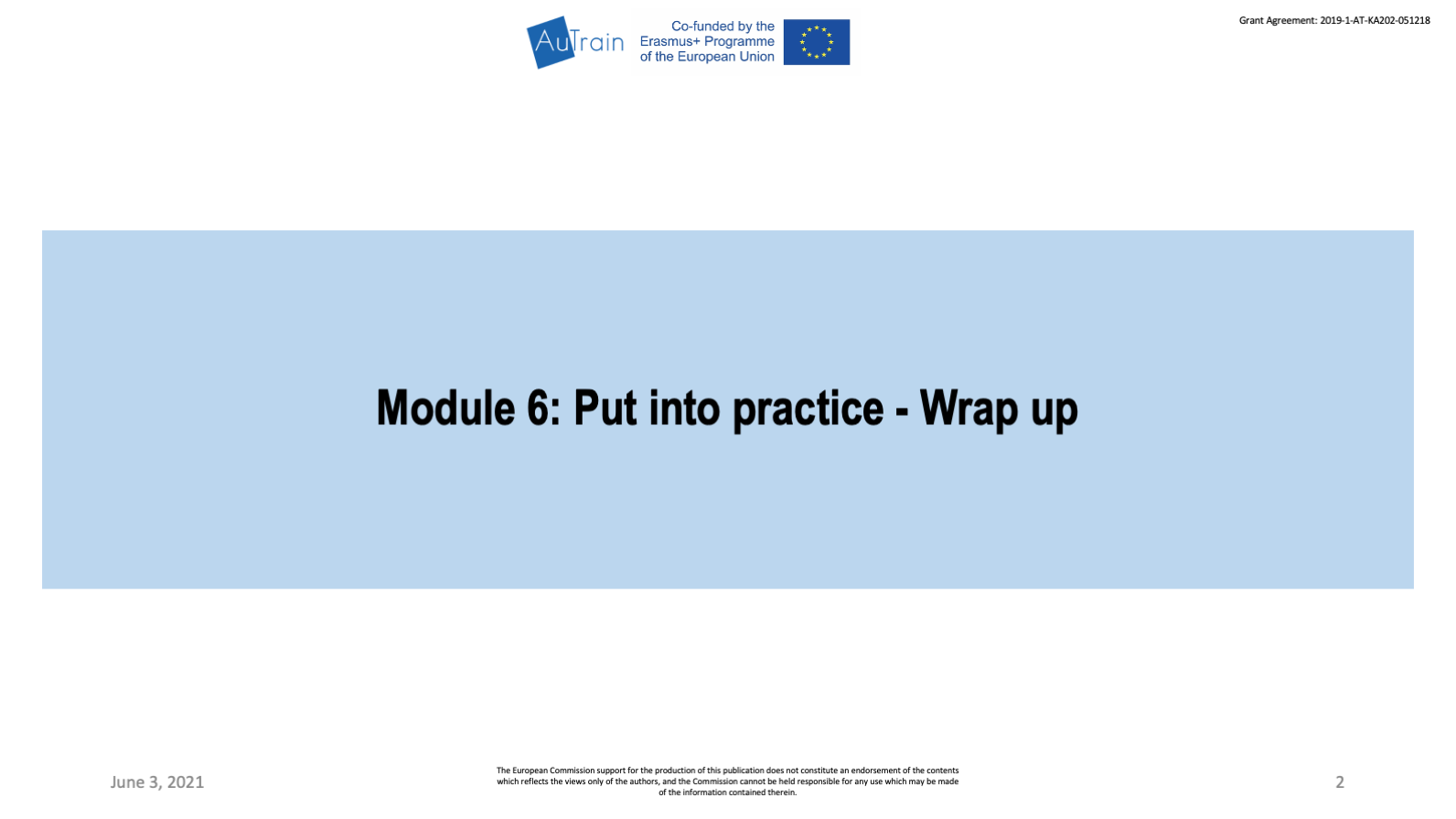
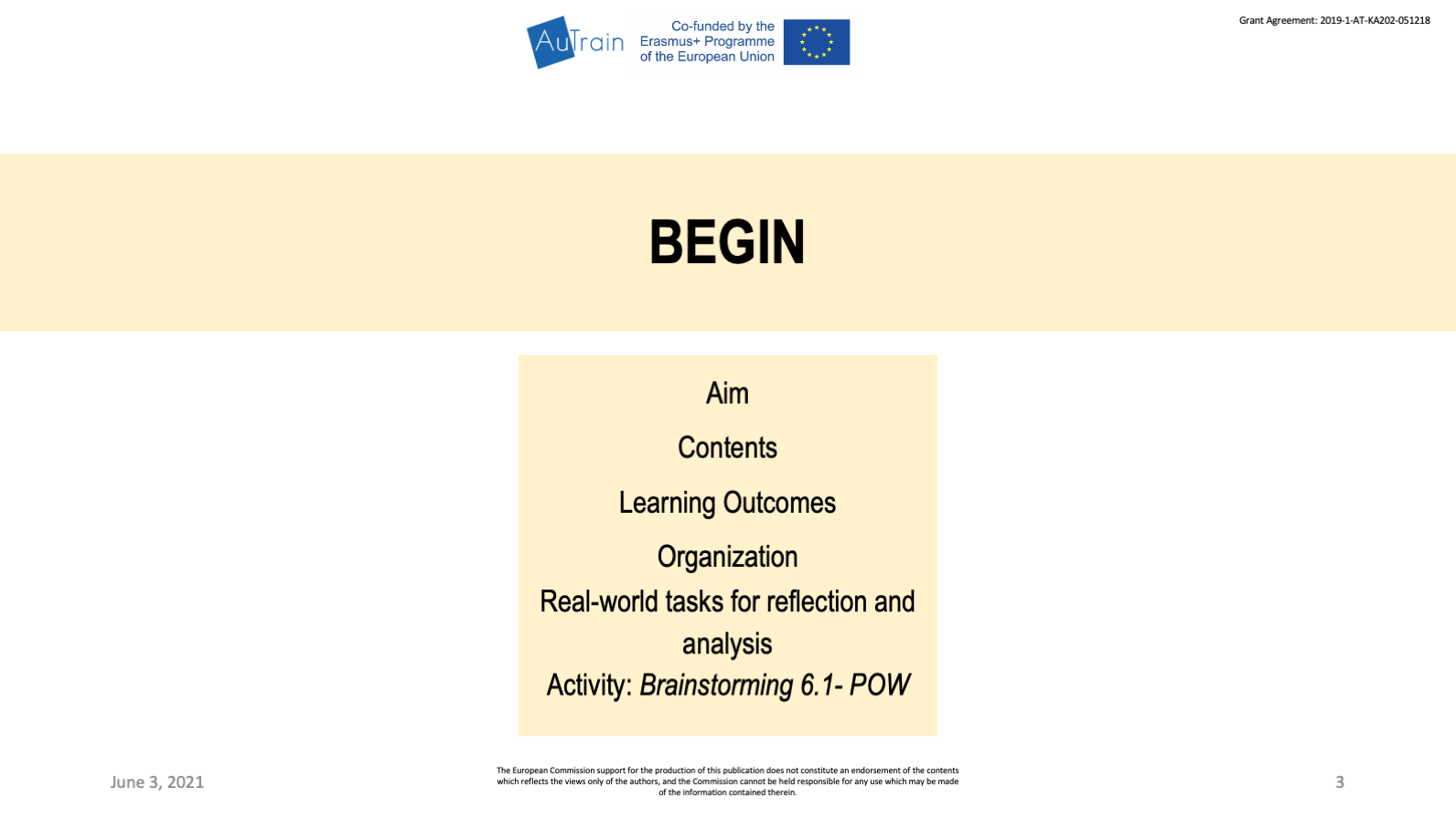
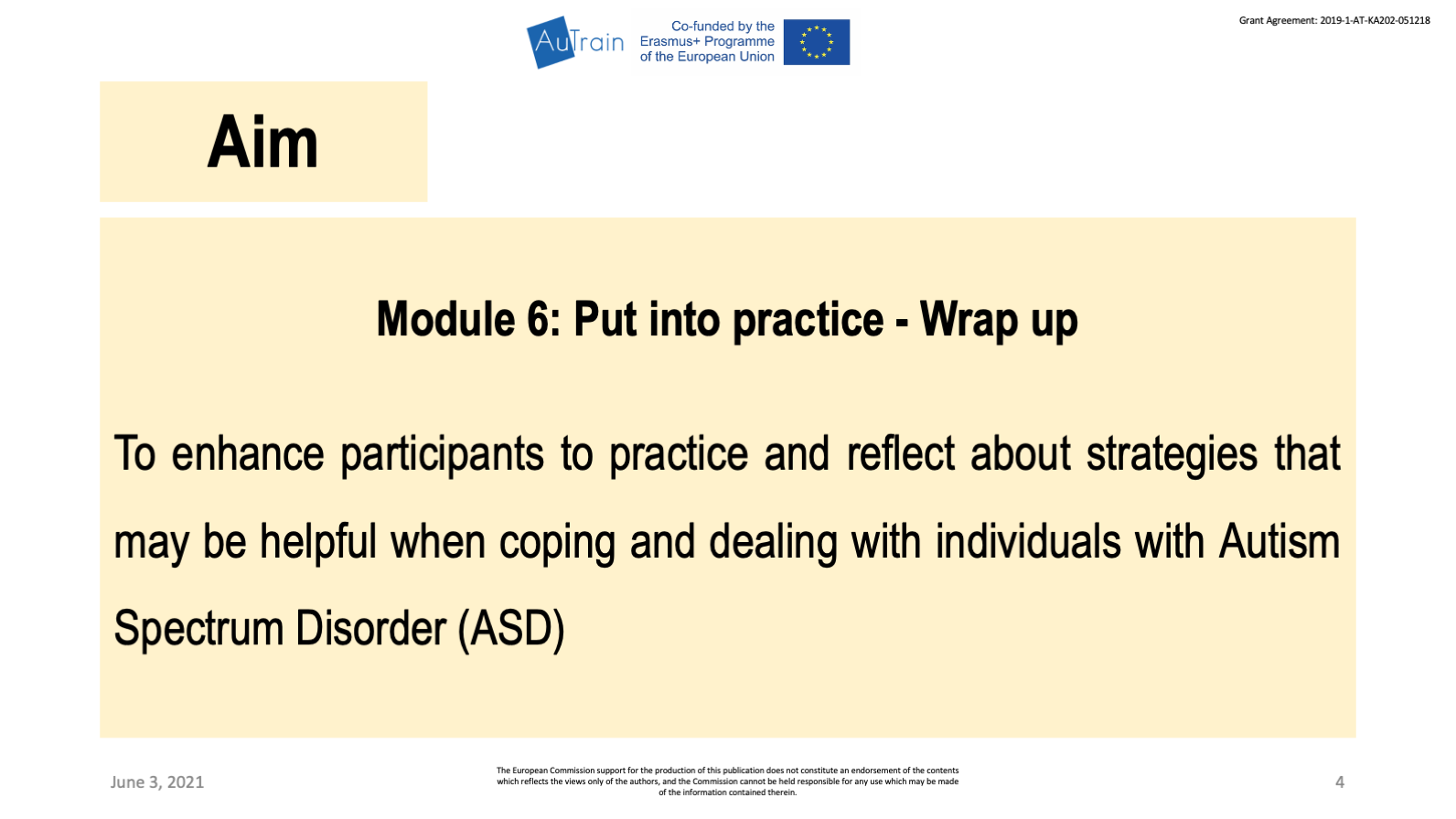
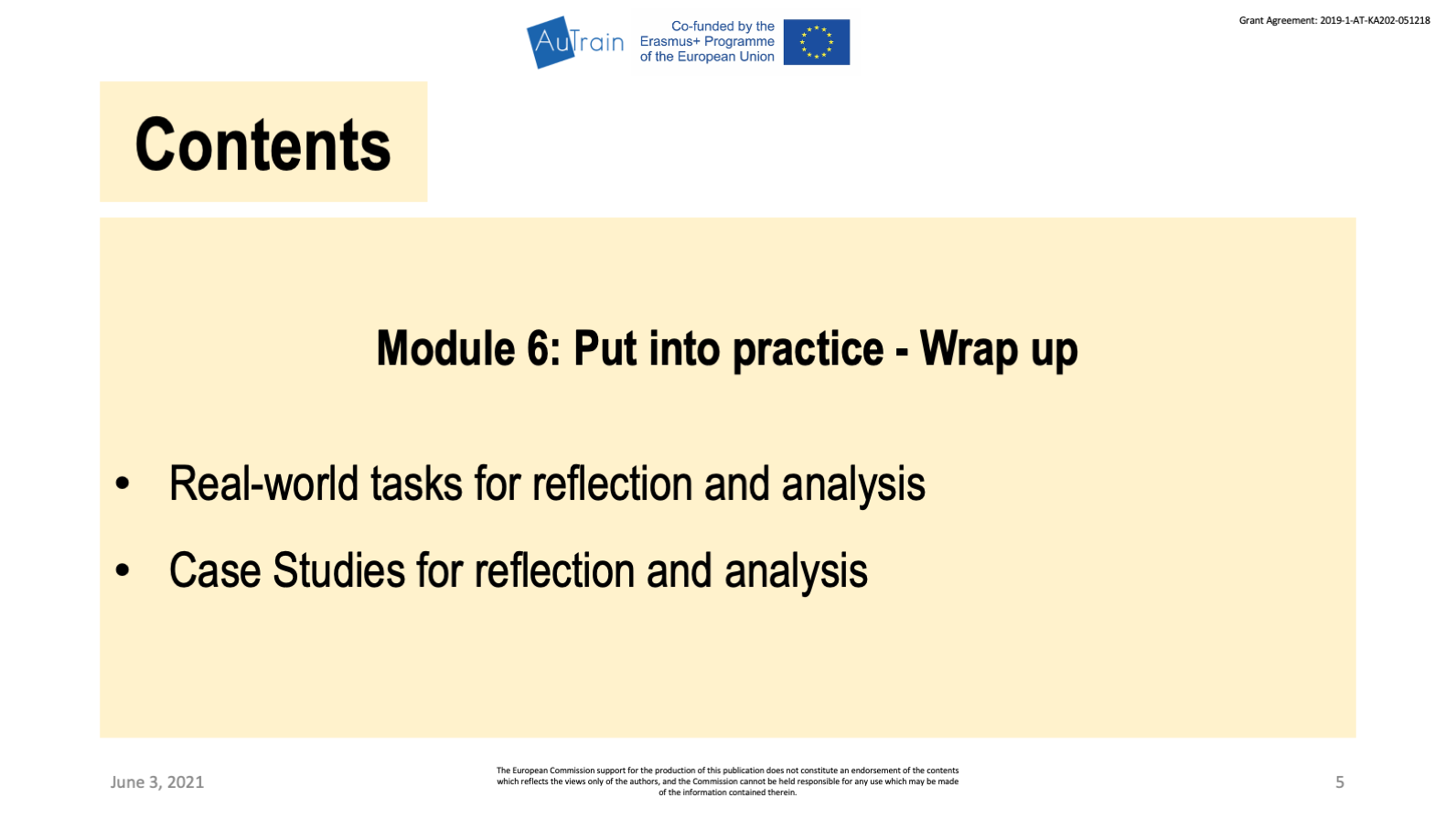
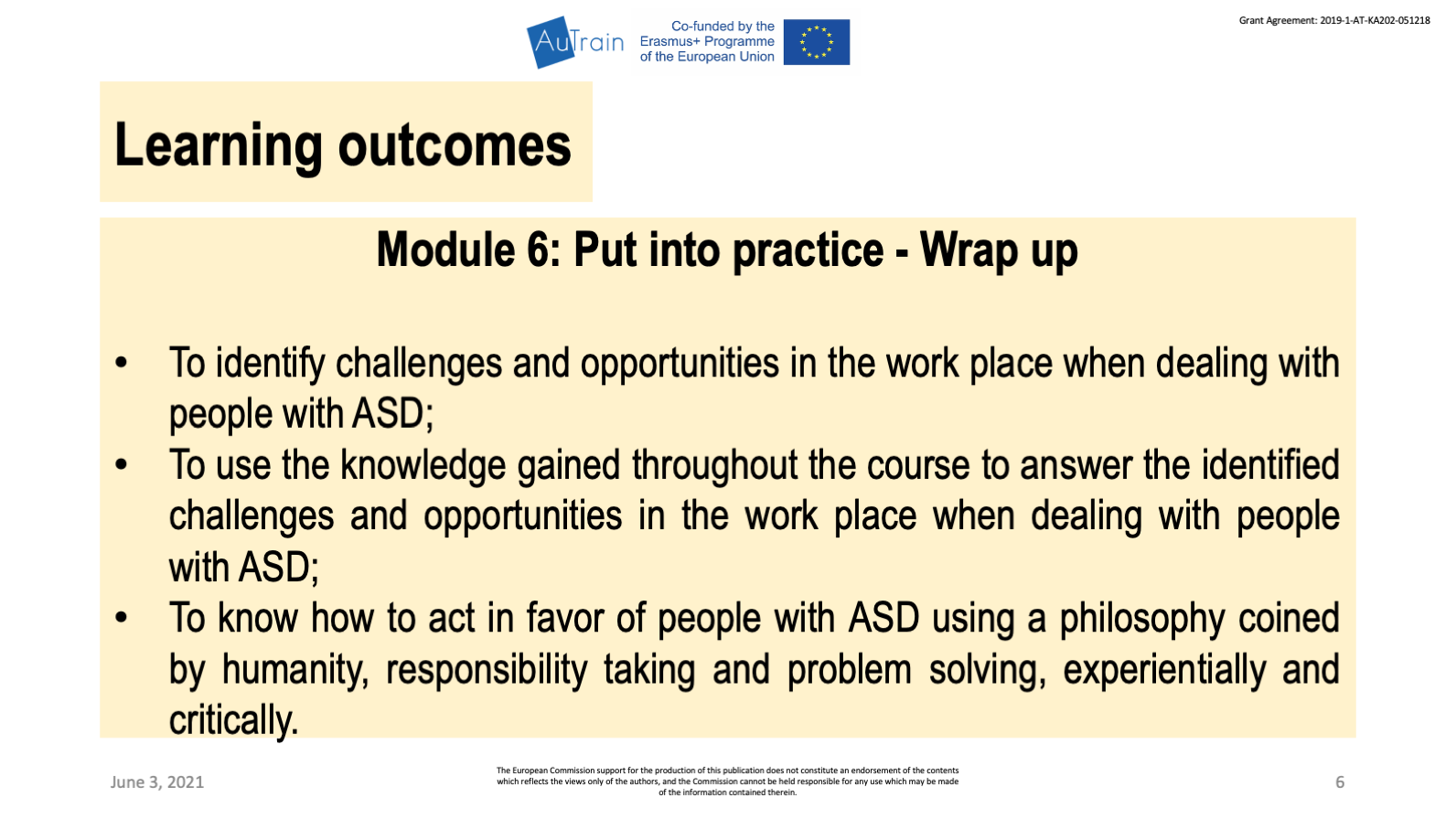
Aim
This sixth model aims to enhance participants to practice and reflect about strategies that may be helpful when coping and dealing with individuals with Autism Spectrum Disorder (ASD).
Contents
- Real-world tasks for reflection and analysis;
- Case Studies for reflection and analysis.
Learning outcomes
- To identify challenges and opportunities in the work place when dealing with people with ASD;
- To use the knowledge gained throughout the course to answer the identified challenges and opportunities in the work place when dealing with people with ASD;
- To know how to act in favor of people with ASD using a philosophy coined by humanity, responsibility taking and problem solving, experientially and critically.
#2. Plan with participants’ comfortable break times throughout the module and instruction adaptations, if needed
Note: Present slides number 7 to 8
Organization
Present the overview schedule of the session and suggest a 30 minutes break or two breaks of 10 minutes each. Let the group decide.
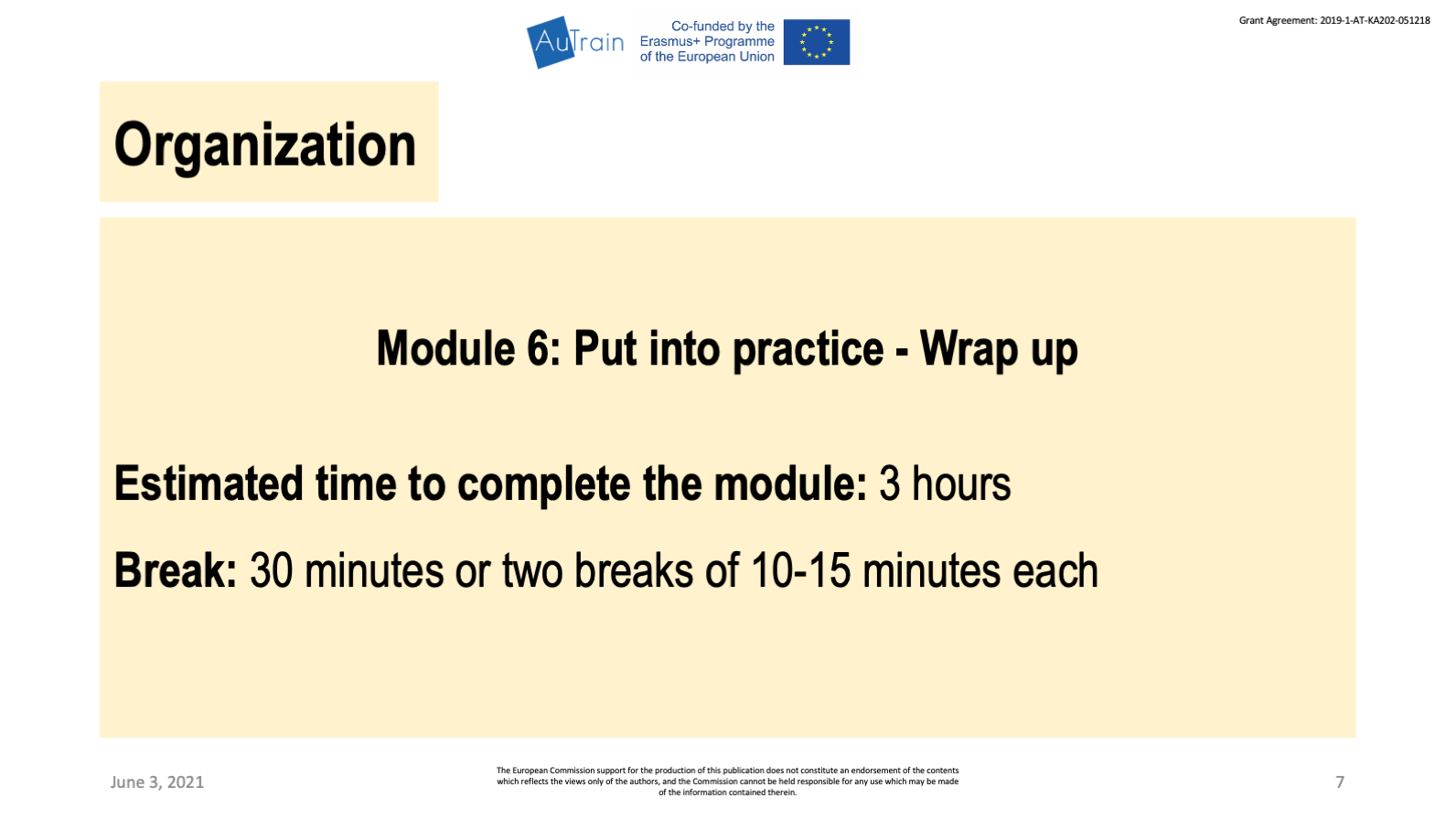
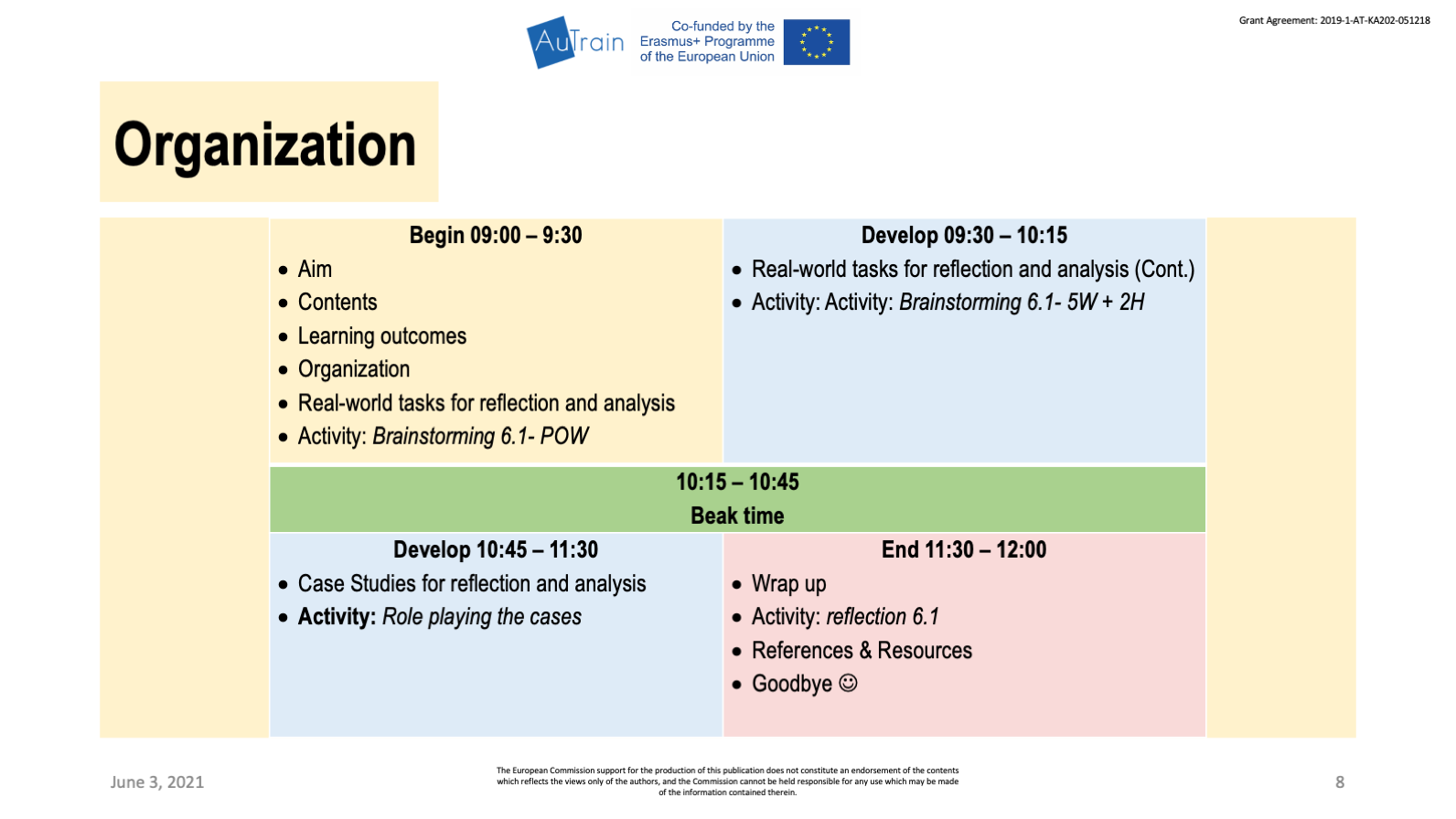
#3. Introduce the content real-world tasks for reflection and analysis
Note: Present slide number 9
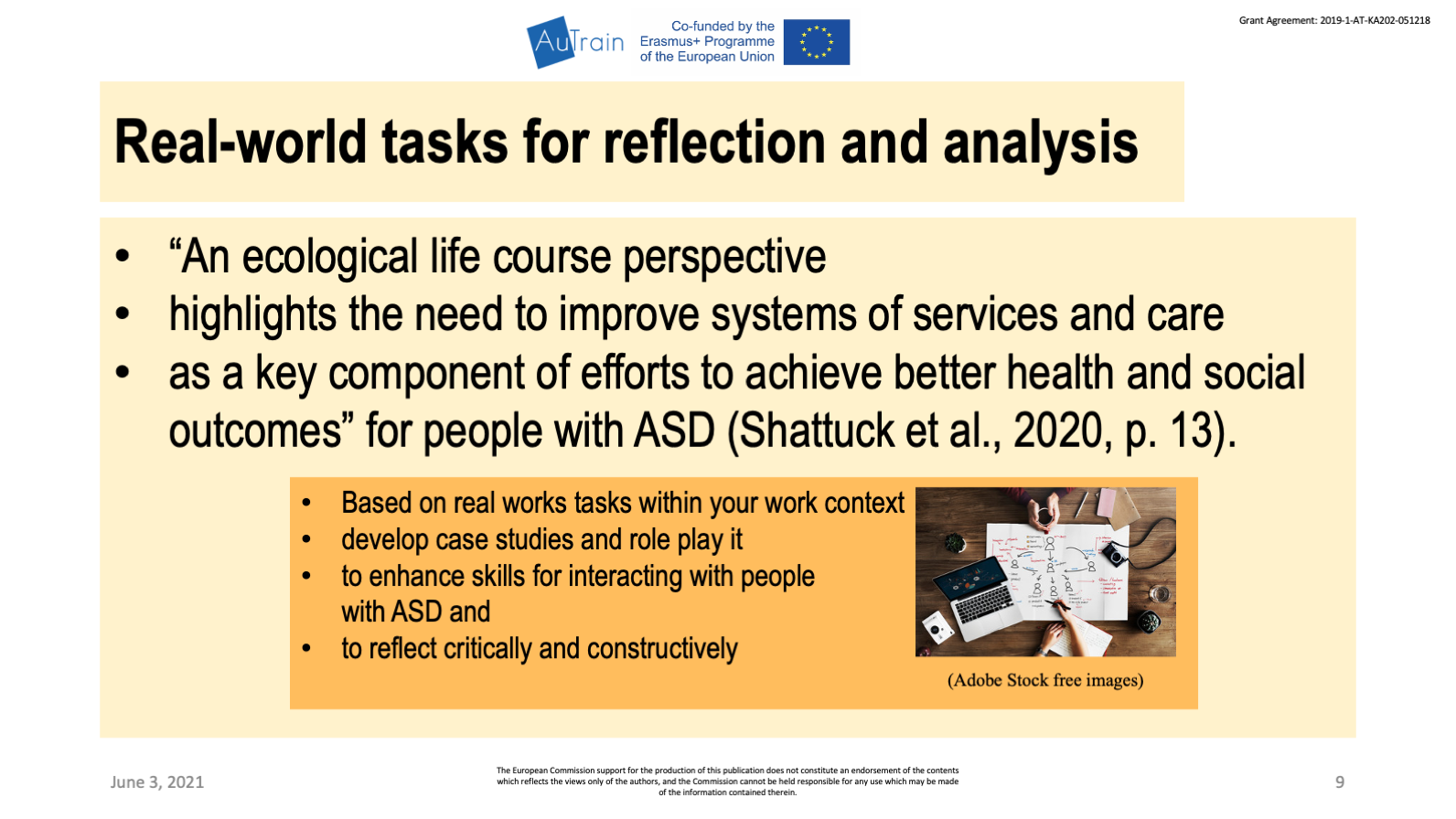
Read the following text out load. In the end, ask for comments, doubts, or questions. We are considering:
“An ecological life course perspective highlights the need to improve systems of services and care as a key component of efforts to achieve better health and social outcomes” for people with ASD (Shattuck et al., 2020, p. 13).
Therefore, today:
Based on real works tasks within your work context we will develop case studies and role playing it to enhance skills for interacting with people with ASD and to reflect critically and constructively about the cases and about what we have been learning.
#4. Introduce and develop the activity Brainstorming 6.1- POW
Note: Present slides number 10 and 11
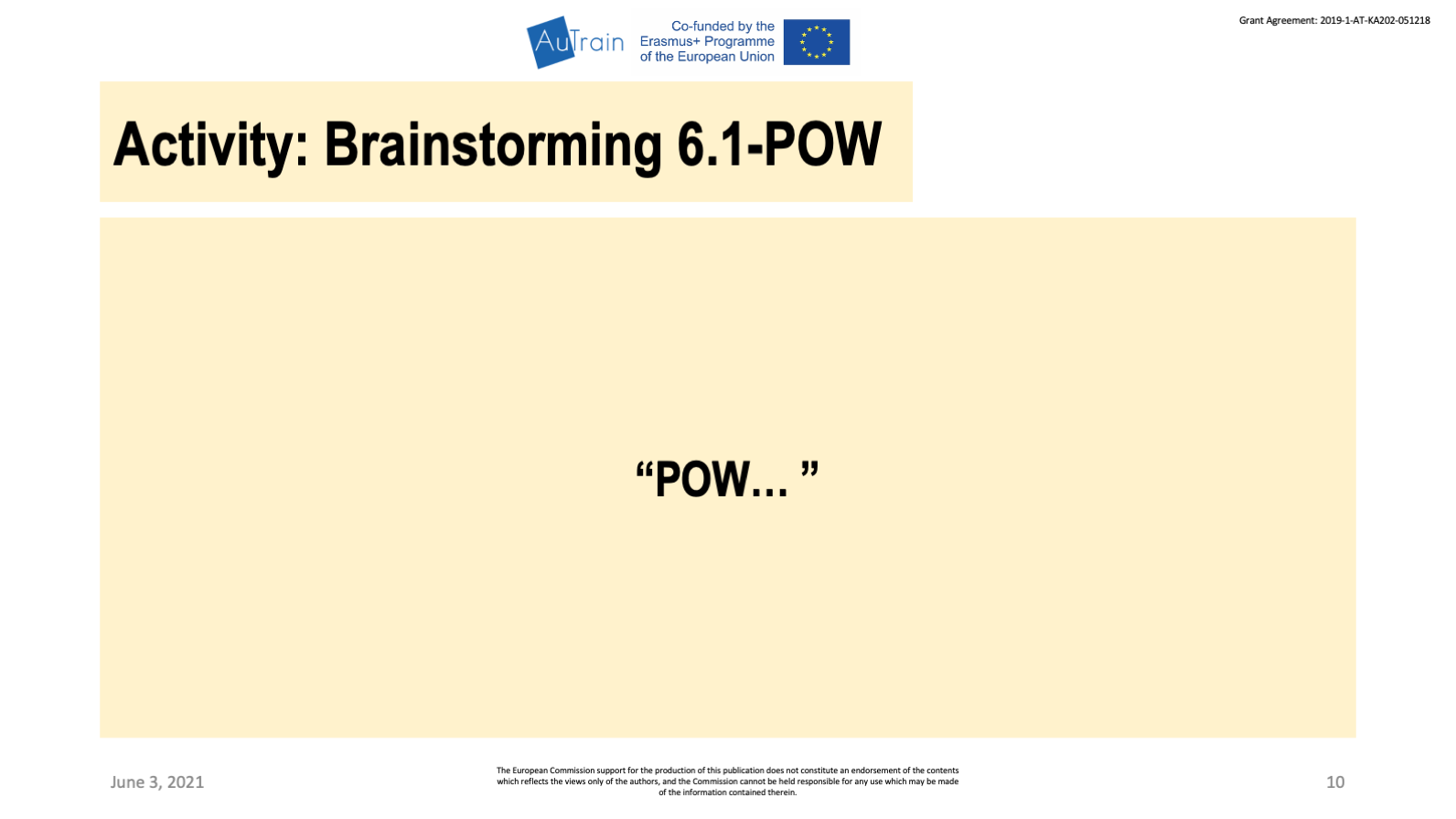
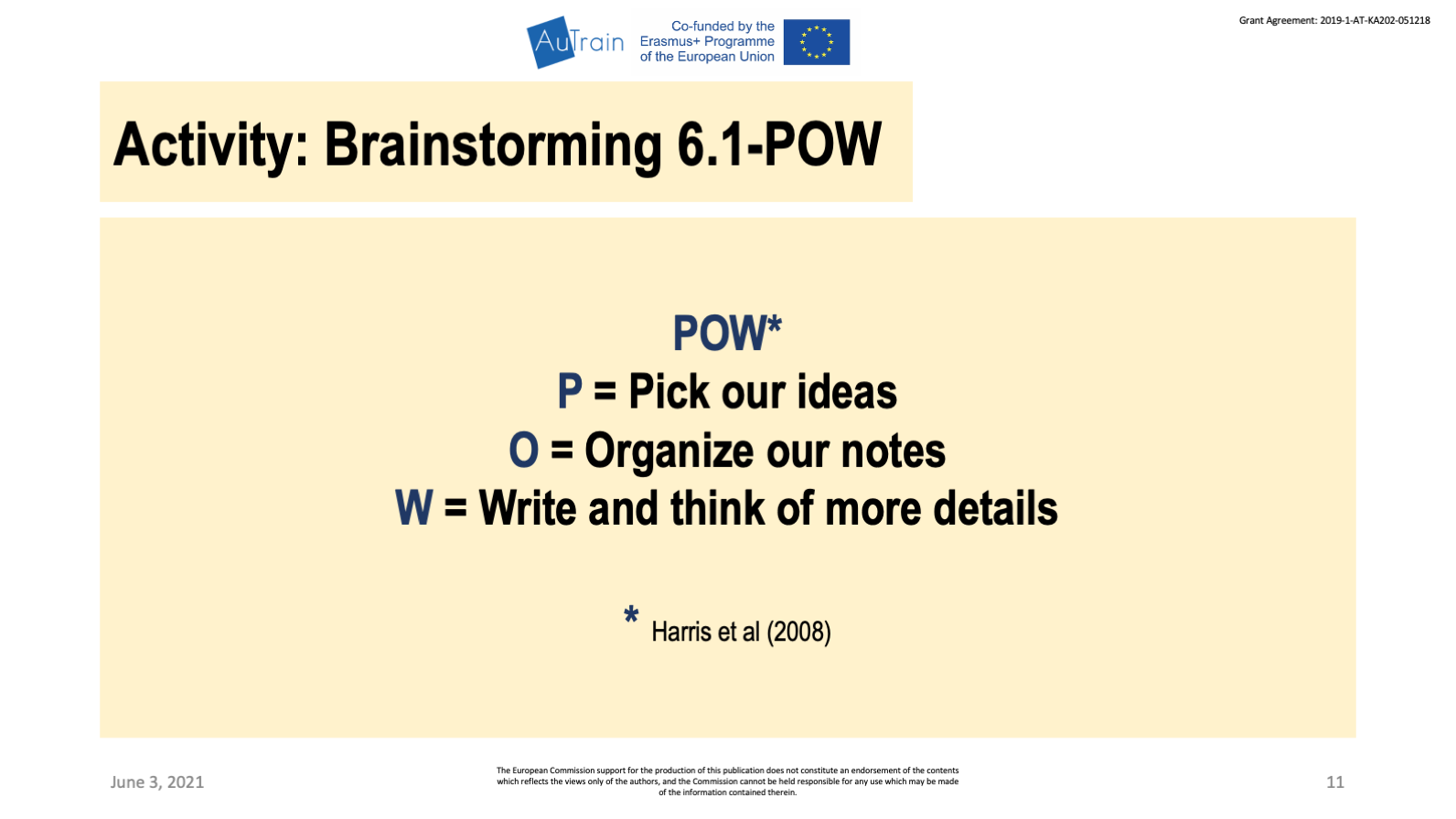
Introduce the aim of the activity
This activity aims to support participants to generate, organize and write notes about real life situations within their work place. It will be the first step in planning and writing the cases we will role playing later in this session.
Introduce the material: Pass out the Worksheet Brainstorming 1.1
Procedures
a. Form small groups of 3 /4 participants. Let participants form the groups, but feel free to find other way; keep your options fluid and flexible. For example, groups can be formed by place of work.
b. Introduce POW* as:
P = Pick our ideas: Think of a good real life situation to role playing and good ideas for parts of the situation; it may be a regular situation at your work place, or at a community public service.
O = Organize our notes: When you have decided about the specific situation, write some notes, and organize it in a chronological way for role playing. Think about your goal, and about what you have been learning in this course that you want to develop and practice within the role playing.
W = Write and think of more details: As you plan and write the situation think of more good ideas or other contents of the course modules that can be used, or that are related. It may be a good idea to have the AuTrain curriculum with you.
c. Give time for work group. While participants are in small groups, you should act as a facilitator, moving from group to group. Doing so allows you to ensure that all of its members are actively participating and learning.
Reference: Harris et al. (2008).
Adaptation for online session: If you are using Zoom you may need to split your participants in separate room (breakout-rooms). If you need any instruction about how to do it check: https://support.zoom.us/hc/en-us/articles/206476313-Managing-Breakout-Rooms


